#EVchargingstation
Text
Empowering Green Mobility: EV Charging Station App Development Excellence

Unlock the potential of eco-friendly transportation with our cutting-edge EV Charging Station app development company. At the forefront of green mobility, we provide seamless, innovative solutions that connect electric vehicle owners with charging stations effortlessly. Our feature-rich apps ensure real-time updates, easy payments, and station availability, empowering users to embrace sustainable travel. Join us in driving the future of mobility with customized apps designed for the growing EV ecosystem.
#EVChargingStation#EVChargingStationappdevelopmentcompany#topMobileAppDevelopmentCompany#appdevelopmentcompanyinUae#MobileAppDevelopmentCompanyinSaudiArabia
0 notes
Text

Best Quality EV Charger in India
Transform the way you charge!
Stay Charged on the Go with Our Best Quality EV Charger in India. Never worry about running out of power again as you journey towards a sustainable future.
📞011 41183116 | For Whatsapp: 93113 13734
#evcharger#evchargingstation#evchargingsolutions#ev charger in India#electric vehicle fast charger#ev charger india#servotech
0 notes
Text

Electric Vehicle Charging Station at Hospital
Incharz specializes in providing reliable and efficient EV charging solutions, making them the ideal choice for installing an Electric Vehicle Charging Station at hospitals. With a focus on cutting-edge technology and user-friendly design, Incharz ensures that hospitals can offer convenient and fast charging options for EV owners.
0 notes
Text
#EV Charging Solutions#EVChargingStation#Expo#2024.#electricvehicles#electricvehiclesnews#evnews#evtimes#autoevtimes#evbusiness
0 notes
Text
#element14 Electronics#development#electricvehicle#EVchargingstation#powermanagement#connectivity#security#electronicsnews#technologynews
0 notes
Text
At hoping minds, we're at the forefront of the electric vehicle revolution, dedicated to driving sustainable mobility solutions forward. As a leading provider in the EV industry, we specialize in
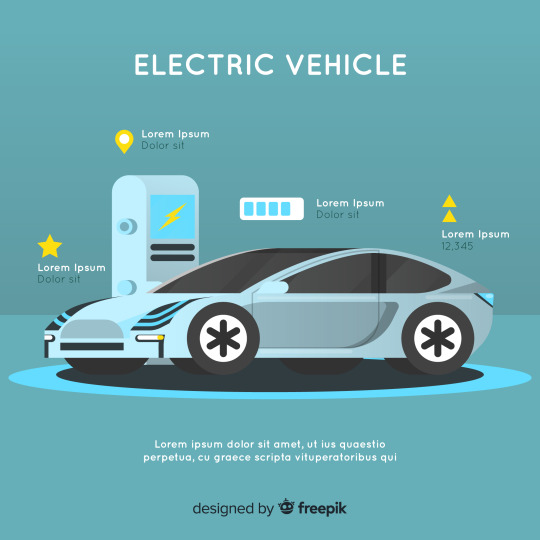
#here are some hashtags incorporating the provided keywords:#ElectricVehicle#ElectricCar#EVChargingStation#ElectricVehicleRange#EVIncentives
1 note
·
View note
Text
Comprehending The Infrastructure Of Electric Vehicles

January 19, 2024
by dorleco
with no comment
Autonomous Vehicle Technology
Edit
Introduction
We have covered the most recent developments in Electric Vehicles technology as well as the infrastructure that will be required to enable EVs to become the norm for personal mobility in the future in this post.
Since their initial introduction, electric cars (EVs) have advanced significantly and are currently enjoying greater popularity than ever. However, some motorists are still apprehensive about giving up their conventional gas-powered internal combustion engine (ICE) cars. While there has been a noticeable performance improvement, long-distance charging capabilities remain a significant worry.
This introduction of EV technology covers the increasing need for a national charging network and the upgrades to the national electricity system required to make EV ownership feasible. Planning and collaboration from all parties, including governmental organizations, utility companies, private charging networks, and customers, will be necessary to ensure a seamless transition from the use of fossil fuels to entirely EVs.
The early days of electric vehicles
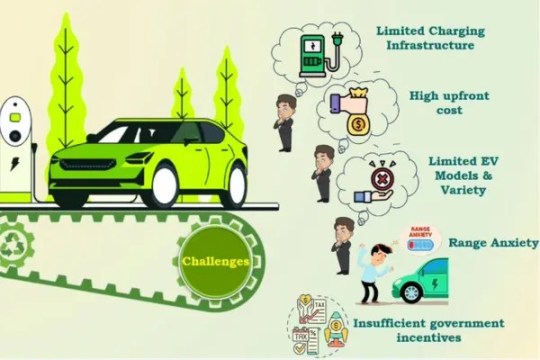
Henry Ford’s mass-produced Model T was the reason behind the decline in interest in electric vehicles. When the Model T was introduced in 1908, gasoline-powered cars were more accessible and reasonably priced. In 1912, an electric roadster sold for almost three times the price of a gasoline car, which cost only $650. By 1935, gasoline-powered automobiles had become more and more popular, and EVs had virtually vanished.
The scarcity of gas has rekindled interest in electric vehicles.
Rising oil costs and gasoline shortages in the late 1960s and early 1970s sparked a rising movement to locate domestic fuel sources and reduce the nation’s reliance on foreign oil. After taking notice, Congress authorized the Energy Department to assist research and development of electric and hybrid vehicles in 1976 by passing the Electric Vehicle Research, Development, and Demonstration Act. Many big and small automakers started looking into alternative fuel vehicle possibilities, such as electric cars, around the same time.
Concern for the environment propelled the development of electric automobiles.
Before new federal and state rules started to change things, interest in electric vehicles had been declining for two decades following the lengthy gas lines of the 1970s. The approval of the 1990 Clean Air Act Amendment and the 1992 Energy Policy Act, plus new transportation emissions restrictions imposed by the California Air Resources Board, helped stimulate a revived interest in electric vehicles in the United States. Manufacturers started converting several of their best-selling car types into electric cars, or EVs as they are now called.
Several people were unconcerned with fuel-efficient cars in the late 1990s due to a flourishing economy, a developing middle class, and low gas prices. The public wasn’t interested in EVs at the time, but engineers and scientists were striving to advance the technology of EVs, particularly batteries, with help from the Energy Department.
Many automakers accelerated their entry into the EV market
The Toyota Prius, which debuted in 1997 in Japan, was the first hybrid electric car ever built in large quantities worldwide. Toyota employed nickel metal hydride batteries, a technology backed by studies conducted by the US Energy Department. Furthermore, something else happened in 2006 that had a role in changing the market for electric cars. A game-changing innovation that helped redefine the EV market was the production of a luxury electric sports car with a range of more than 200 miles on a single charge by a small Silicon Valley business called Tesla Motors.
In late 2010, the Chevy Volt and the Nissan LEAF were both released in the US market. The first plug-in hybrid car to be sold commercially was the Volt, which has a gasoline engine to augment its electric drive when the battery runs out. The LEAF could only be propelled by an electric motor since it was an all-electric car. Other US automakers started producing electric cars during the following few years, but the issue of where to charge them while driving remained.
EV charging stations started to proliferate.
More than 18,000 public, business, and home chargers were installed around the nation in 2009 thanks to funding provided by the Energy Department and the American Recovery and Reinvestment Act, totaling more than $115 million. Today, there are more than 8,000 distinct places with more than 20,000 charging outlets for public electric vehicle chargers thanks to the installation of private companies and automakers’ chargers in strategic US locations.
Infrastructure for EV charging is required nationwide due to rising EV sales.
Given the increasing number of EVs on the road, a national network of charging stations is now essential. Everyone will need to plan and work together, including consumers, government organizations, utility companies, and private charging networks. The problem of the power grid being overloaded cannot be resolved by a varied private network of charging networks on its own. As communities start sharing energy, everyone has to be more conscious of the demand for the power system and make proactive plans.
EVSE (Electric Vehicle Supply Equipment) is the technical term for the equipment used to charge electric cars; it is often referred to as a charging station. An electric safety system for the user and the electrical infrastructure during the charging process is the main purpose of a plug-in vehicle charging station; in particular, it reduces the risk of electric shock and fire.
Networks for charging electric vehicles
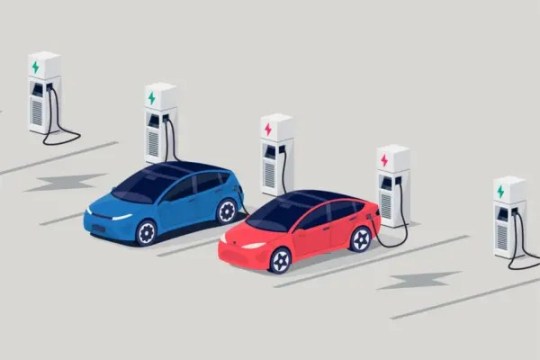
A network of separate infrastructure stations that serve as access points for electric car recharging is known as an electric vehicle charging network. Currently, a large number of federal, state, and local governments, automakers, and suppliers of charging infrastructure are building these networks. State-by-state working agreements between these various institutions will be necessary to aid in the further development of a national infrastructure.
These days, several producers and providers of charging networks offer hardware-agnostic app solutions like Amp Up, EV Connect, and Green Lots, or proprietary solutions like Charge Point. While proprietary vendors prevent consumers from making changes, hardware-agnostic vendors let them swap out their existing charging stations and/or network providers.
Growth of the US electric vehicle charging infrastructure market
In 2020, the US market for electric vehicle charging infrastructure was estimated to be worth USD 2.08 billion. From 2021 to 2028, its compound annual growth rate (CAGR) is predicted to be close to 39%. The market for electric car charging infrastructure is anticipated to see substantial growth over the next ten years due to the growing popularity of electric vehicles and their advantages, which include energy efficiency and cheaper fuel and maintenance costs.
In addition to the annual growth forecast, the $1.85 trillion Build Back Better Act invests $7.5 billion to create a state-wide network of plug-in EV chargers, according to the draft structure. A further $7.5 billion is allocated for buses and ferries with zero or low emissions, to provide thousands of electric school vehicles to school districts all around the nation. The proposal would allocate $65 billion to strengthen the nation’s power grid’s dependability and resilience, which is essential for the smooth transition to electric vehicles (EVs) and guard against the extensive power outages that have been more frequent in recent years.
Expanding the market reach of plug-in electric vehicles, new battery technology is being introduced with support from the Department of Energy Vehicle Technologies Office. The DOE’s research also helped develop the lithium-ion battery technology utilized in the Chevrolet Volt. Lately, the DOE’s research and development expenditures on batteries have contributed to a 50% reduction in the cost of electric vehicle batteries, all the while enhancing the batteries’ power, energy, and lifespan. Since the price of EVs has decreased as a result of all these advancements, people can now afford them.
EVs driving towards the future

President Obama established the EVs Everywhere Grand Challenge in 2012, an Energy Department project that unites the nation’s top scientists, engineers, and companies to get plug-in electric vehicles down to the same price as gas-powered vehicles by 2022.
It remains to be seen what the final result will be for EVs this time around, but it seems certain that most drivers will be using EVs in the future as the infrastructure of charging stations expands and the power grid stabilizes to supply the extra electrical power required.
Components of an EV charging station
An essential component of the technology utilized to construct EV charging stations is the electrical controls used in their production. These could consist of the following:
Overload and short circuit protection is provided by miniature circuit breakers or MCBs.
Residual Current Circuit Breakers offer weather protection against extreme temperatures.
Disconnect switches are necessary when an installation must adhere to current specifications for a disconnecting procedure.
Surge protection devices shield delicate parts from overvoltages and lightning-induced surges.
Contactors, which have a 115A general-purpose current rating, are used to turn on and off the EV’s power.
Energy meters are required if the station is going to be used for commercial charging since the amount of energy used needs to be measured to determine how much consumers should be charged. For this, a digital energy meter with a maximum 80A capacity is utilized.
In charging stations, terminal blocks, wire ducts, and DIN rails would also be utilized to facilitate wiring during assembly.
To power the entire network, a networked charging station would require high-tech devices like controllers and gateways. Additionally, a DC power supply that requires a single or three-phase input voltage would be included.
#ADAS#VCU#Powertrains#EVs#Vehiclecontrolunit#Dorleco#CANcommunication#CAN#ElectricVehicles#EVchargingstation
0 notes
Text
#evcharging#ev#electricvehicle#electricvehicles#evcharger#electriccars#electriccar#evchargingstation#emobility#driveelectric#tesla#gogreen#electricmobility#evchargers#electric#electricvehiclecharging#evs#sustainability#zeroemissions#technology#renewableenergy#goelectric#greenenergy#ecofriendly#chargingstation#evchargingstations#car#environment#zeroemission#teslamodel
0 notes
Text
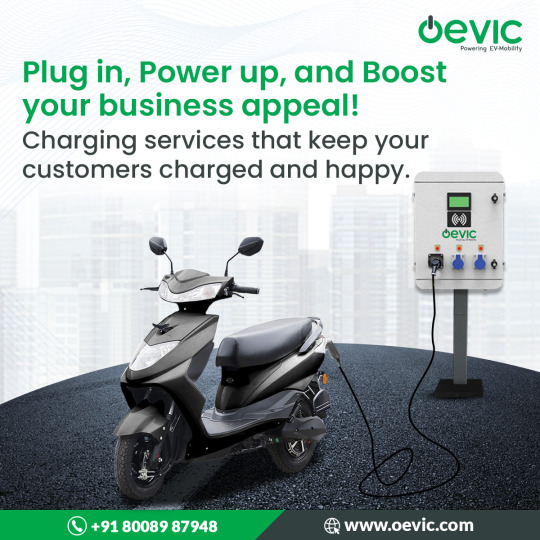
Plug in, Power up, and Boost your business appeal!
Charging services that keep your customers charged and happy.
For EV Charging Solutions Contact Us!
📱+91 8008987948
🌐 oevic.com
0 notes
Text
E-Station | Rugged Monitoring
Rugged Monitoring provides solutions for Electric Vehicle Charging, EV Charging Stations. Power Cable monitoring ensures continuous power supply to the charging station. It includes monitoring Partial Discharge, Temperature, and Periodic Testing Data. Check our website for the latest fiber optic Temperature Monitoring Solutions.
0 notes
Text

Power up your Petrol Pump with Servotech EV Chargers
Servotech Power Systems offers a powerful solution for petrol pumps looking to attract more customers and increase revenue. These chargers are certified by ARAI and iCAT and ensure high ROI with a wide range of AC & DC options. Power up your petrol pump and stay ahead with Servotech EV Chargers.
0 notes
Text
Electric Vehicle Charging Infrastructure | DC Fast Ev Charging Stations
Incharz offers the best quality electric vehicle charging infrastructure with reliable and fast DC EV charging stations for efficient and eco-friendly travel. Be the Incharz Now!
#evchargingstation#evcharginginfrastructure#electricvehiclecharginginfrastructure#dcfastevcharging#incharz
0 notes
Text
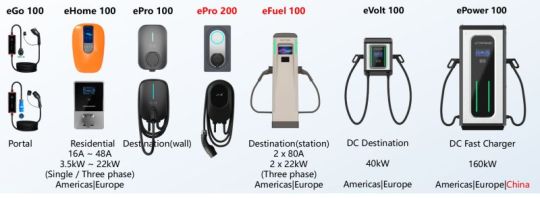
AC/DC EV Charging Station, OEM/ODM Customization, Type 1 Sae J1772, Type 2, CCS1,CCS2 etc. Connectors/Socket #EVSECharger #EVcharging Station #Automotiveaccessories #EVChargingInfrastructure #EVChargingInstallation #ElectricVehicles #Emobility #plugandcharge #DCfastCharging
Goproenergy ODM/OEM AC/DC EV Charging Solutions Provider| Established in 1994| Listed in 2017| Stock Code: SZ300632
with six production bases in China and one in Malaysia, covering over 160,000 square meters,
With much export experience and strong capital support, products certified with ETL, FCC, Energy Star,CE and UKCA etc., trustable for the aftersales services.
For More info, please kindly check the followings, Thanks:
Mob/whatsapp/Skype :+86 13925006856
Email: [email protected]
Website: www.goproenergy.com
linkedin.com/in/goproenergy-evcharger-evse
youtube.com/@goproenergy_evcharger_evse
facebook.com/goproenergy.evcharger.evse
instagram.com/goproenergy_evcharger_evse
x.com/Gopro_EVCharger
tiktok.com/@goproenergy_evcharger
#electrocar#EVSE Charger#Electric Vehicles#Automotivesaccessories#Emobility#DC fast Charging#PlugandCharge#Electricvehicleinfrastructure#EVcharginginstallation#EVchargingstation#AC EV Charging pile#EV Charging Modules
1 note
·
View note
Text

Tesla Gen 3 Wall Connector is here!!!
We are pleased to announce that starting today, the Tesla Gen 3 Wall Connector is available for supply & installation from Marky Sparky!
This advanced charging solution offers faster, more efficient charging right at your home, transforming the way you power your Tesla. Featuring a sleek design and smart features, it's tailored to maximize your convenience and charging efficiency. Don't just drive the future, power it with the Gen 3 Wall Connector. Experience the evolution of EV charging today!
Got any inquiries? Send us a message.
Marky Sparky Electrical
Toongabbie 2146, Sydney, NSW, Australia
0432 209 235
https://www.markysparkyelectrical.com.au/
#themarkysparkyteam#Electrician#Sydney#NSW#ElectricalCompany#ElectricalServices#australia#sparky#localelectrician#evchargerinstallation#electricvehicles#evcharging#evchargingstation
0 notes
Text
A Digital Energy Electric Power Equipment Solution Provider

#Wallbox#Chargingpile#RCDEVcharger#RCDEVchargingStation#EVcharger#EVChargingStation#ChargerManufacturer#ACEVcharger#DCEVcharger#ACcharger#DCcharger#EVSE
1 note
·
View note
Link
As an electric vehicle owner, you are confused if you've never used an Electric Vehicle Charging Station. It may damage your electric vehicle charging slot or charging gun. Read here five simple steps to use an electric vehicle charging station shared by an EV charging solutions provider.
0 notes